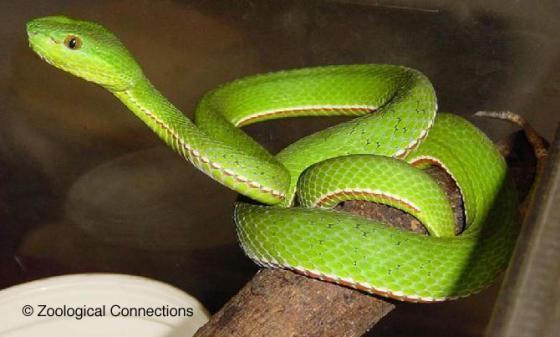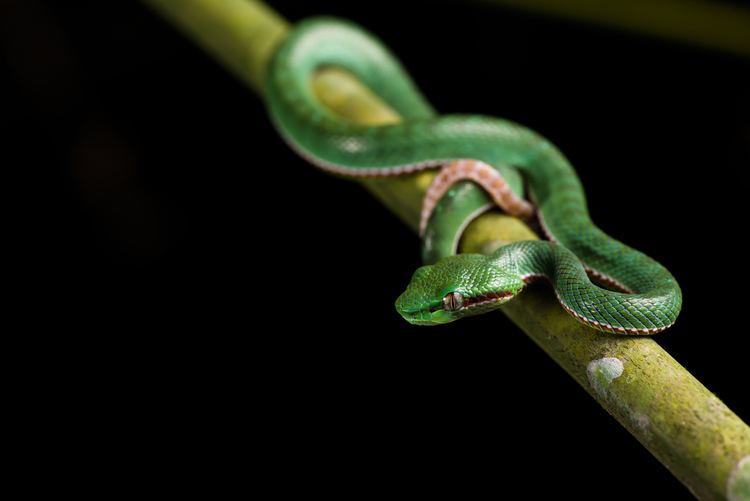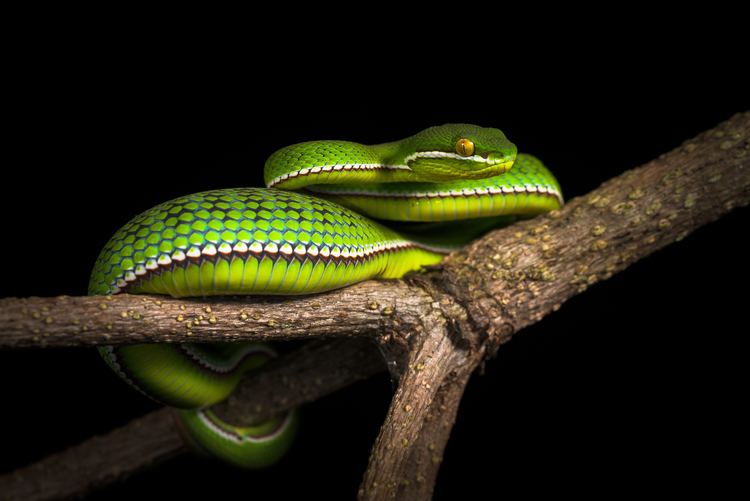Higher classification Vipers | Scientific name Trimeresurus | |
 | ||
Lower classifications Trimeresurus albolabris, Trimeresurus stejnegeri, Trimeresurus trigonocephalus, Trimeresurus flavoviridis, Trimeresurus purpureomaculatus Similar Trimeresurus albolabris, Trimeresurus flavoviridis, Trimeresurus purpureomaculatus | ||
Bali reptile rescue rescue trimeresurus insularis
Trimeresurus is a genus of venomous pit vipers found in Asia from the Indian Subcontinent throughout Southeast Asia, China and the Pacific Islands. Currently 35 species are recognized. Common names include Asian palm pit vipers, Asian lanceheads and Asian lance-headed vipers.
Contents
- Bali reptile rescue rescue trimeresurus insularis
- Trimeresurus trigonocephalus tree viper
- Description
- Feeding
- Reproduction
- Venom
- Geographic range
- Species
- Taxonomy
- References

Trimeresurus trigonocephalus tree viper
Description

Most species in the genus Trimeresurus are relatively small, primarily arboreal species, with thin bodies and prehensile tails. However, Trimeresurus flavoviridis (the Okinawa habu) can reach a total length (including tail) of 242 cm (7 ft 9 in), and is one of the longest pit vipers in East Asia. Trimeresurus species are typically green in color, but some species also have yellow, black, orange, red, or gold markings.
Feeding
Their diet includes a variety of other animals, including lizards, amphibians, birds, rodents and other small mammals.
Reproduction

Like most viper species, many of the species in the genus Trimeresurus are ovoviviparous, bearing live young. However, some species such as T. flavoviridis, T. kaulbacki, and T. macrolepis are oviparous, lay eggs. Also, the reproductive biology of some Trimeresurus species is as yet unknown.
Venom

Their venom varies in toxicity between species, but all are primarily hemotoxic and considered to be medically significant to humans.
Geographic range
Southeast Asia from India including regions of North Chotanagpur ofJharkhand to southern China and Japan, and the Malay Archipelago to Timor.
Species
*) Not including the nominate subspecies.
T) Type species.
Taxonomy
Species that may be recognized by other sources include:
The genus Trimeresurus (sensu lato) has been the subject of considerable taxonomic work since 2000, resulting in the recognition of additional genera within this complex. Most authors now recognise the genus Protobothrops for the species cornutus, flavoviridis, jerdonii, kaulbacki, mucrosquamatus, tokarensis, xiangchengensis, since these have been shown not to be closely related to other Trimeresurus in recent phylogenetic analyses.
In addition, Malhotra and Thorpe (2004) proposed a radical shake up of the entire genus, splitting Trimeresurus into seven genera. Their proposed arrangement (including species described since 2004) is shown in the table below:
This new arrangement has been followed by many, but not all subsequent authors.
David et al. (2011) considered some of the genera of Malhotra & Thorpe to be subgenera of the genus Trimeresurus, creating new combinations such as "Trimeresurus (Parias) flavomaculatus", "Trimeresurus (Popeia) popeiorum", "Trimeresurus (Viridovipera) stejnegeri", etc.
